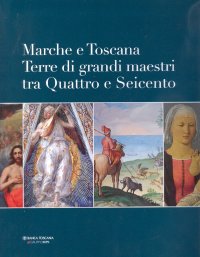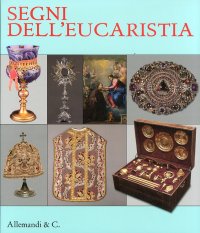Beato Angelico
Firenze, Palazzo Strozzi, 26 settembre 2025 - 25 gennaio 2026.
A cura di Carl Brandon Strehlke.
Testi di Stefano Casciu, Marco Mozzo, Angelo Tartuferi.
Venezia, 2025; ril., pp. 456, 300 ill. col., cm 24x29.
prezzo di copertina: € 80.00
|
Libri compresi nell'offerta:
Beato Angelico
Firenze, Palazzo Strozzi, 26 settembre 2025 - 25 gennaio 2026.
A cura di Carl Brandon Strehlke.
Testi di Stefano Casciu, Marco Mozzo, Angelo Tartuferi.
Venezia, 2025; ril., pp. 456, 300 ill. col., cm 24x29.
OMAGGIO (prezzo di copertina: € 80.00)
Marche e Toscana. Terre di grandi maestri tra Quattro e Seicento
Ospedaletto, 2007; ril., pp. 320, ill. col., tavv. col., cm 25,5x29.
OMAGGIO (prezzo di copertina: € 77.00)
Segni dell'Eucarestia
A cura di M. Luisa Polichetti.
Ancona, Osimo, Loreto Jesi, Senigallia, Fabriano e Metelica, 23 giugno - 31 ottobre 2011.
Torino, 2011; br., pp. 221, ill. b/n e col., cm 24x28.
OMAGGIO (prezzo di copertina: € 32.00)
Anatomical Studies
Michael W. Kwakkelstein
Harvey Miller Publishers
Testo Inglese.
London, 2022; ril., pp. 220, 94 ill. b/n, 62 ill. col., cm 17,5x26.
(Corpus Rubenianum Ludwig Burchard. 20.1).
collana: Corpus Rubenianum Ludwig Burchard
ISBN: 0-905203-80-1 - EAN13: 9780905203805
Soggetto: Arti Grafiche (Disegno, Incisione, Miniatura)
Periodo: 1400-1800 (XV-XVIII) Rinascimento
Testo in: 
Peso: 1 kg

Baia grande. La pialassa Baiona ultima frontiera per una valle salmastra
Viaggio nelle Curve d'Europa. Il Tifo Come Linguaggio dei Popoli
Tommaso d'Avalos. Un intellettuale a Napoli nel primo Seicento










